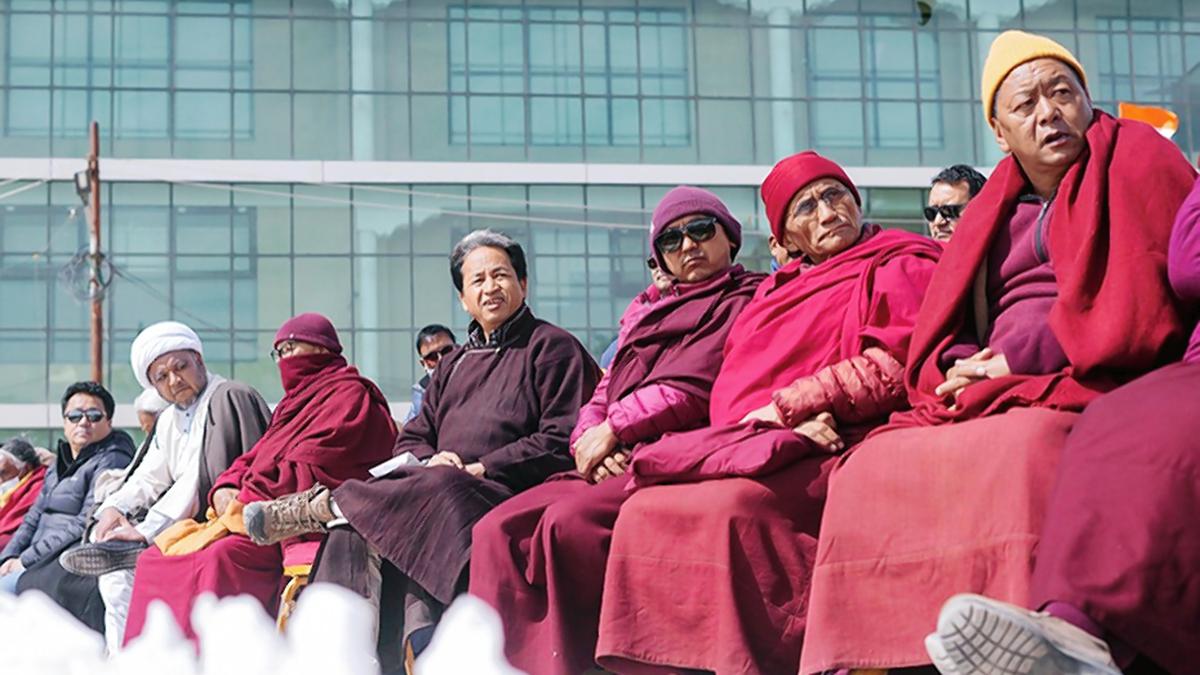
Why are Ladakh’s residents on a hunger strike? | Explained Premium
The Hindu
Sonam Wangchuk's climate fast in Leh demands Sixth Schedule safeguards for Ladakh's resources and decision-making authority.
On March 6, in Leh, a town situated at about 3,500 metres in the cold, arid Union Territory (UT) of Ladakh, Sonam Wangchuk, Ladakh’s famous educationist and environmentalist, began a 21-day hunger strike that he called a “climate fast”.
The strike was in support of thousands of Ladakh residents who have been demanding safeguards under the Sixth Schedule of the Indian Constitution so they can make decisions regarding the use and management of resources such as land and water. They currently can’t.
Mr. Wangchuk discontinued his hunger strike on March 26; it is currently being continued by women in Leh. If their demands stay unmet, the youth, monks, and the elderly have said they will join the hunger strike as well, in phases.
In August 2019, the State of Jammu and Kashmir was split into two UTs: Jammu and Kashmir and Ladakh. It ended people’s exclusive rights on land and jobs.
Under the Jammu and Kashmir Reorganisation Act, 2019, Ladakh became a UT without a legislature.
“Our UT is administered by a Lieutenant Governor, who is a not a Ladakh resident, and yet is appointed to take decisions for our future,” said Jigmat Paljor, coordinator of Leh Apex Body (LAB), a collective of political, social, religious, and student organisations of the Buddhist-majority Leh district.
Several bureaucrats in key positions, influencing decisions for the region’s future, were also not residents of Ladakh, Sajjad Kargili, a core committee member of Kargil Democratic Alliance (KDA) of the Muslim majority Kargil district, said. Like LAB, KDA is a collective of Kargil’s political, social, religious, and student organisations.

The Karnataka government has drafted a comprehensive master plan for the integrated development of Kukke Subrahmanya temple, the State’s highest revenue-generating temple managed by the Hindu Religious Institutions and Charitable Endowments Department. The redevelopment initiative is estimated to cost around ₹254 crore and aims to enhance infrastructure and facilities for devotees.












